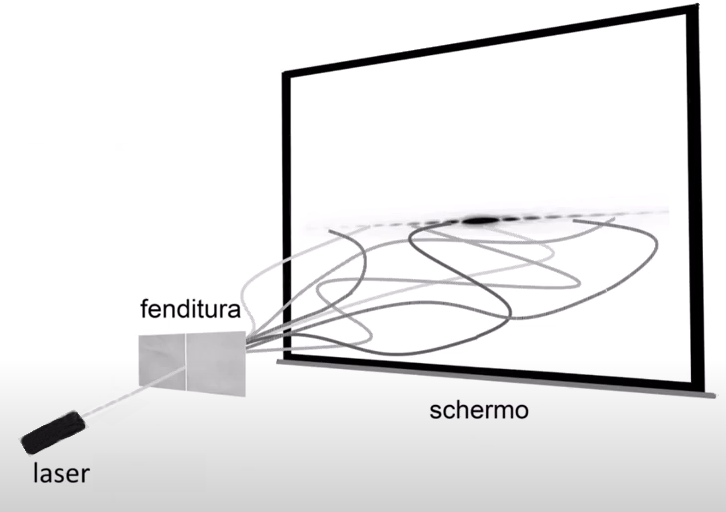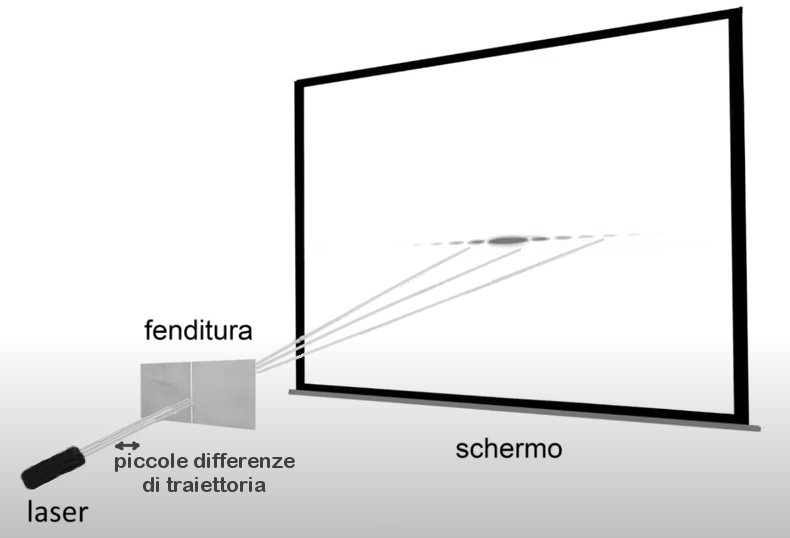Let's look at this image that was created by a beam of photons in the diffraction experiment.
We can reasonably think of the single photon as a probability distribution, that is a cloud with soft edges.
The interference pattern seen in the experiments can give us some hints on the interaction between photons and the slit..
If the photons were simple balls they would pass through the slit or hit the metal and bounce back., so a slit would only have the effect of tightening the bundle.
But the photon follows probabilistic rules similar to what a soft-edged ball would follow (probability cloud). They can therefore be imagined (without any pretense that this is the real functioning at the microscopic level) some behaviors similar to classical refractive behaviors, squeezing, deformation and rebound, than a rubber-feather ball (with soft edges) it could follow when fired at high velocity through a rift.
We can therefore verify that simple models based on multiple rebounds and elastic deformations (probabilistic models of refraction) they could easily cause a probability distribution of the photon's exit directions exactly the same as what we see in the interference figure. Going into more detail, the calculations can highlight preferential directions (around which the bright spots are created) and cusps which force the photon to deviate on one of the two sides and which therefore generate the dark areas (with zero or very low probability) .
We are not trying to resurrect hidden variable theories
which are now buried beyond a reasonable doubt.
We know Bell's inequalities and do not intend to refute them.
But while retaining total freedom of choice for subatomic particles
are equally possible various "simplifications" for the use of us humans.
– – –
In our interpretation, stochastic creativity remains unchanged,
but we suggest moving it a little further back, where the photon is born,
due to population inversion in the quantum strata,
that is, inside the laser.
The photon creation zone, where photons come out of nowhere,
appears as the most appropriate place to place quantum creativity.
This shift places all creativity in a singularity
and therefore simplifies our vision of what happens
in the area between creation (laser), the slit and the screen.
– – –
Always bearing in mind that these are alone Limited points of view from the possibilities of our language, useful for understanding us between humans, ma valid only for describing macroscopic behaviors and not quantum mechanisms. We can therefore transform the following image, which describes widespread creativity:

In the following image that describes a creativity concentrated in the points of creation of photons:

In this last image we see photons with soft edges (probability clouds) that come out of the LASER with slightly different positions and directions.
These small variations were "chosen" by the photons themselves at the time of their creation and are totally nondeterministic.
From this point on, small differences in trajectory can explain the interference patterns, with probabilistic mechanisms similar to those of classical reality, therefore without the need to hypothesize "quantum oddities" along the path that goes from the LASER to the screen.
Moreover, following this explanation we no longer need to imagine a wave function that collapses when we observe it. The random choices of individual photons occur even if no one observes them and this is easily demonstrated with the "Accumulation of photons" experiment that you can find in the final part of this page dedicated to experiments.
But in reality it is not good to go into these "explanations", not so much due to the impossibility of imagining them but because our concepts and our words are valid only for describing collective behaviors and statistical rules that occur in the macroscopic world.
In fact, we could imagine anything, for example, the expansion throughout the universe of a wave function which then collapses at a point, but this is only one of the many possible hypotheses of the functioning of photons (and other subatomic particles).
So it would be better to totally avoid these "explanations" and realize that the quantum functioning of particles cannot be described with the words and concepts developed by us for our macroscopic world.
The only things we can say are the results from the observations, that is, for example, that a photon is born inside the laser and that, after a few hundred picoseconds, it transforms into an electrical charge at a certain point in a camera's CMOS detector. And we can also say that a large number of particles behave statistically in certain ways, following the law of large numbers.
For which wondering what a single photon does in those picoseconds, how he interacts with objects and why he does these things are wrong questions. The correct answer is not to try to describe its operations with phantom collapses of the wave function, but simply realize that they are not mechanisms that can be described with our language and our macroscopic concepts.
– – –
According to our calculations, this view can coexist with Bell's inequality experiments, but to be sure we await the approval of prof. Anselmi
(and eventually we will correct this page).
– – –
In conclusion, what we define “immutable laws of nature” they are valid only for our size. But at subatomic dimensions, very large speeds or infinite masses (as in the singularities of black holes), all the concepts on which we base our thoughts lose consistency. Time no longer flows in the way we imagine, It can no longer be defined which event precedes the other and even less define that an event is the “cause” of another.
 In one of our paragraph on the non-deterministic programming There is this sentence:
In one of our paragraph on the non-deterministic programming There is this sentence:
“We are not dealing with the immutable laws of nature
but only with the branches of our trees
and with our limited mental capacity as a little monkeys a little advanced.
And it is only our immense immodesty that makes us believe we are something more
of a dot between two eternities that are called before and after.”


